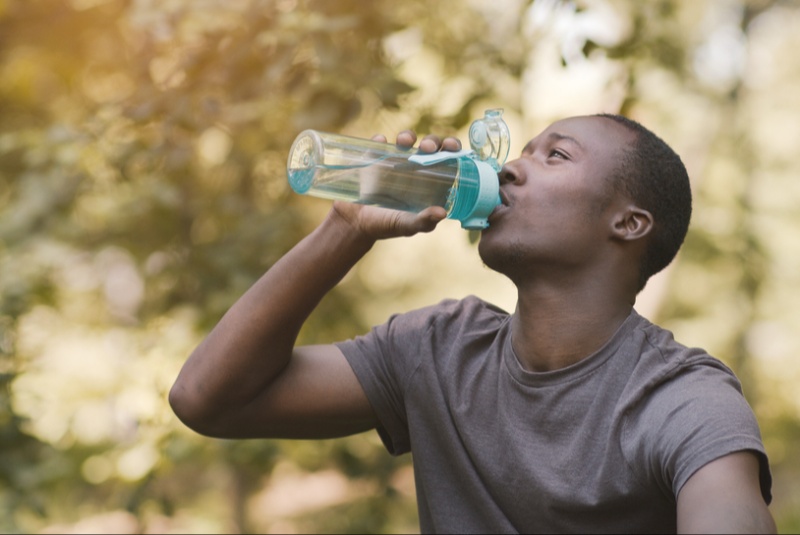Exercising in hot weather is a challenge that many face during the summer months. The increased temperatures can pose significant health risks, such as dehydration and heatstroke. However, with careful planning and the right precautions, you can continue your outdoor workouts safely and effectively. This guide provides detailed strategies to help you stay cool and safe while maintaining your fitness regimen in the heat.
Understand the Risks Associated with Heat
It’s crucial to recognize the potential dangers of exercising in high temperatures. The body cools itself through sweating, but during intense heat, this may not be sufficient. Heat illnesses occur when the body overheats and cannot cool down effectively. These conditions range from mild, such as heat cramps, to more severe forms like heat exhaustion and heatstroke. Heatstroke is an emergency and can be fatal if not treated promptly. Symptoms of heat-related illnesses include muscle cramps, fatigue, dizziness, headache, nausea, rapid heartbeat, and extreme body temperatures. Being aware of these symptoms can help you take immediate action to prevent a minor issue from becoming a serious health crisis.
Schedule Workouts During Cooler Times
To minimize heat exposure, plan your workouts during the cooler parts of the day. Early morning or late evening are ideal times because the sun is not as intense, and temperatures are generally lower. Avoid midday exercise when the sun is at its peak. If the forecast predicts extreme heat, it might be wise to alter your workout plan, reducing the intensity or duration to adjust to the hotter conditions.
Select Proper Clothing and Gear
Choosing the right apparel is vital for staying cool. Wear lightweight, breathable, and moisture-wicking clothing to help facilitate sweat evaporation and keep your body cool. Light-colored clothes are preferable as they reflect rather than absorb heat. Additionally, a well-ventilated hat can protect your head from direct sunlight, and quality sunglasses can shield your eyes from harmful UV rays. These items not only help regulate your body temperature but also protect you from the sun’s damaging effects.
Prioritize Hydration
Staying hydrated is essential when exercising in hot weather. Dehydration can quickly lead to heat exhaustion or heatstroke. Drink plenty of fluids before, during, and after your workout to keep hydrated. Water is generally sufficient for short exercises, but if you’re planning a longer or more intense workout, consider beverages that replace electrolytes lost through sweat. Keep a bottle of water handy and take regular sips throughout your exercise session, even if you don't feel thirsty.

Acclimate Your Body to the Heat
Acclimatization helps your body adapt to heat more effectively. If you are not used to exercising in hot conditions, start by gradually increasing the time you spend on outdoor workouts. It can take several weeks for your body to adjust to higher temperatures. During this period, your body becomes better at regulating heat by increasing sweat production and decreasing salt loss in sweat. This adaptation can help prevent heat-related illnesses.
Use Sunscreen
Protect your skin by applying a water-resistant, broad-spectrum sunscreen with an SPF of 30 or higher. Sunburn impairs the body's ability to cool itself and increases the risk of skin damage. Apply sunscreen generously 30 minutes before going outdoors, and reapply every two hours, or more frequently if you are sweating heavily.
Choose Cooler, Shaded Areas for Workouts
Opt for shaded paths or parks for your workouts to avoid direct sun exposure, which can significantly increase the risk of heat-related illnesses. Trees, buildings, and other structures can provide natural cooling areas that will make your exercise more comfortable and safer.
Listen to Your Body
Monitoring how you feel during exercise in the heat is crucial. At the first sign of any heat-related symptoms, stop exercising immediately. Find a cool or shaded area, drink water, and rest. Continuing to exercise when you feel unwell can lead to serious health consequences. Your body's signals should always dictate the intensity and duration of your workouts during hot weather.
Consider Alternative Indoor Workouts
On days when the heat is excessive, it may be safer to take your workout indoors. Gyms, indoor tracks, or swimming pools are great alternatives that allow you to stay active without the risks associated with high outdoor temperatures. Indoor environments typically provide air conditioning and other amenities to help manage body temperature more effectively.
Educate Yourself on Emergency Responses
Knowing how to respond to heat-related emergencies can be lifesaving. Educate yourself on the signs of heat exhaustion and heatstroke. If you or someone you're exercising with shows symptoms of heatstroke, such as confusion, altered mental states, or cessation of sweating, seek emergency medical help immediately. While waiting for help, attempt to cool down with whatever means available, like ice packs, fans, or cold water.
By adhering to these comprehensive strategies for exercising in hot weather, you can safeguard your health while continuing to enjoy your fitness routine throughout the summer. Planning your workouts during the cooler parts of the day, wearing appropriate clothing, staying hydrated, and listening to your body are key measures to prevent heat-related illnesses. Additionally, acclimatizing to the heat, using sunscreen, choosing shaded workout areas, and being prepared to move indoors on excessively hot days will further enhance your safety. Remember, understanding how to recognize and respond to signs of heat exhaustion and heatstroke is crucial. With these precautions in place, you can stay active, healthy, and cool as temperatures rise.




